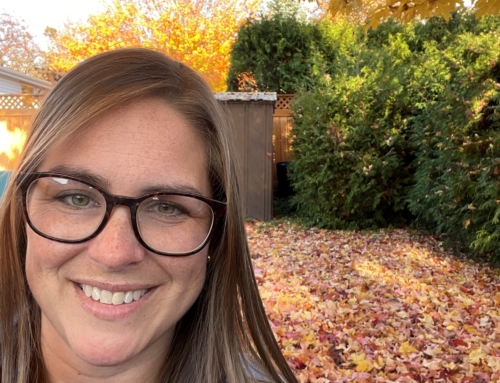Whether you are new to exploring what accessibility might look like in a church context or have been invested in advocacy and inclusion efforts for years, I highly recommend picking up and reading a copy of Dr. Lamar Hardwick’s book, Disability and the Church.
This book is somewhat unique in the disability ministry space because it is written by a pastor who journeyed with autism and was eventually diagnosed in 2014. I am hopeful that, moving forward, more of our accessibility resources are authored by people with lived experience. Dr. Hardwick relays that, despite finding success in many aspects of his life, “It has always seemed as if the entire world was in on an inside joke that I just didn’t understand” (13-14). When he was diagnosed at age 36, not only did it help him to make sense of his world but it also led to a series of conversations about his own life, his work as a pastor, and the role of the church in becoming a place of belonging for all people.
“Being diagnosed with autism has actually taught me how to be more human, how to hurt, how to seek help, how to heal, how to hope, and more importantly, how to hunt for the best in others – those who are also in desperate need of having their humanity recognized, respected, and celebrated with grace, love, and acceptance.”
Disability and the Church, p 186.
Thankfully, Hardwick has not only grown through his experiences as a Black autistic pastor in America but has taken the time to help others learn from these experiences. His intersectional lens, a viewpoint that offers insight into various avenues of marginalization and discrimination, challenges the prevailing norm that “Sameness is simple, and sameness is safe” (30). “The church was born for inclusion,” Hardwick writes (154), and goes on to list a number of New Testament examples where Jesus or the early church live this value out.

Where many books address racism and others address ableism or accessibility, Hardwick deftly relates the kinds of marginalization that can be common experiences without reducing one to another. Equality is key to his vision of inclusion, because “We cannot seek diversity without unity, and we cannot seek unity without equality” (33). Hardwick presents a distinctly Christian vision of inclusion: “The gift of grace is that it positions all races, ethnicities, cultures, and people with various conditions at the foot of the cross” (33). Human equality is not only to be won, it is to be restored to people who are united by Christ’s sacrifice on the cross.
While Shelly Christensen’s From Longing to Belonging is more applicable to congregations of other faith perspectives, Hardwick’s book will resonate with Christian audiences due to the way he draws on his pastoral experience and offers insights on scriptural passages throughout. One of the aspects of the book that I enjoyed most was the way he dives into parables and stories such as the lost sheep, the banquet, the parable of the sower, and the imagery of the lion and lamb from the New Testament to convey profound points about people with disabilities being welcomed in and contributing to their local church contexts.
Hardwick’s book is not a “how-to” manual, though it does offer next steps for churches aspiring to greater accessibility. Erik Carter’s Including People with Disabilities in Faith Communities or the latest version of the Inclusion Handbook (everybody-belongs.com) may be better options for people wanting to jump to the “how.” Yet, throughout the pages of Disability and the Church you will find many principles for creating welcoming community. One example of this is the four characteristics of churches that are headed in the right direction:
- People over programs
- People with disabilities being celebrated, not tolerated
- Circles over rows (bringing people together), and
- Pastor approval versus pastor apathy (the importance of leadership involvement) (p. 96)
While Hardwick includes a number of statistics to back up his writing, he also emphasizes that communities must go beyond statistics to receive each person as they are: “People with disabilities need to know that they are important and that the church is capable of affirming the totality of how they are created” (p. 170). In the same way, Hardwick presents this book from his vantage point as an autistic pastor, and can speak most effectively to this experience. However, I’m sure you’ll find – as I did – that his perspective, together with extensive research and pastoral insight, offers a compelling vision for the future of inclusive churches, a vision that cannot arrive quickly enough!


